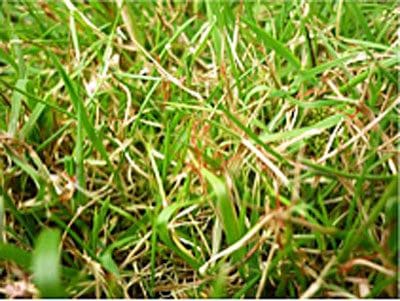Kentucky Bluegrass
Your Kentucky Bluegrass may seed out (see image). If you notice this, don’t worry, it is seeding out and will not be that way for long.
Your Kentucky Bluegrass will go dormant (yellow or brown) when it gets cold. It is still healthy grass and you can still lay sod when it’s dormant. It will green up as it warms up and is watered and fertilized adequately.
You may mow your new lawn (on a higher setting the first time) after the roots have taken hold.
Call NowRequest A Quote
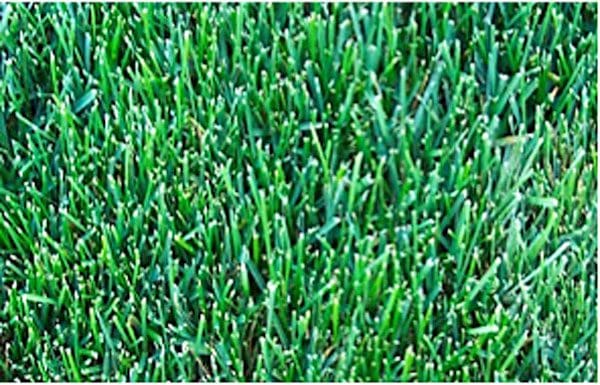
Kentucky Bluegrass
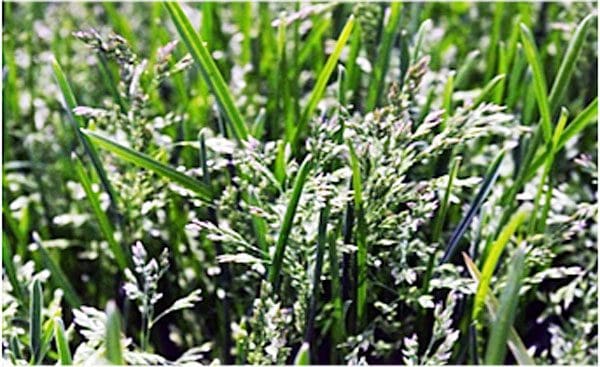
Seeding Out
Preparation
Kill existing vegetation. Some resilient weeds will need a second application to fully kill. Wait several days for the weeds to die before moving onto the next step. Whatever is still living beneath your sod will continue to grow and come up in your sod.
Loosen the soil with a shovel, rototiller or rake. It reduces compaction and makes it easier for the roots to grow into the soil. The loose soil will also hold moisture better. Go over the area multiple times to break up any large clumps and pick up and dead vegetation left behind. Rake soil and level as smooth as possible. (Remember your sod is just like carpet – any lumps or clumps will still be there after your sod has been laid.)

Kentucky Bluegrass

Seeding Out
Apply starter fertilizer
Sod requires a lot of nutrients to develop its new root system. Apply a starter fertilizer (we recommend Scotts) on the dirt before installing the grass or right after and water in well. It is best to make several light passes with the spreader instead of a single heavy pass. This will make the application more uniform and helps prevent over-application.
Over fertilizing will burn out your grass. When you over fertilize, the salts build up in the soil and cause a drying effect, which results in your grass turning yellow or brown. Fertilizer burn isn’t always fatal but it’s hard to predict if your lawn will recover.
You will want to do another application about 4 weeks after sod installation. You will then want to establish and keep a regular fertilizing schedule applying a fertilizer best for your area. If you live in a newly established subdivision or have fields and weeds nearby you may also need to do periodic weed and bug control as winds will blow seeds and bugs will find their way into your new lawn.
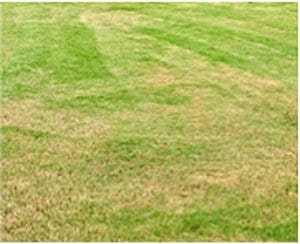
Burned Grass after Over Fertilizing
Installation
Start in an area that is further away and work towards you. This prevents repeated walking on fresh sod you just laid. Start on a straight edge, you will have less cutting.
Stagger the sod in a brick-like pattern and put seams together but do not overlap them.
If you have a steep hill, it’s best to lay sod across the slope instead of up and down. Laying seams up and down the slope could lead to soil erosion during too much water due to over watering or heavy rain.
Call NowRequest A Quote
Watering
Watering is the most important part of sod installation. Don’t wait until the last pallet of sod is installed, begin watering as soon as you have one sprinkler station done start watering that area.
Apply enough water so that the soil beneath the turf is very wet. We recommend 3-4 inches below the surface be moist.
Pull back a corner of the turf or push a screwdriver into the soil. It should push in easily and have moisture on the first 3-4 inches.
You want to make sure the water is getting to all areas of your new lawn. Corners and edges are easily missed by sprinklers and you don’t want any of your sod to dry out. When grass begins to dry the leaves will curl and have a needle-like appearance. Dry spot will have a purple or grey color and eventually turn yellow. If you see these signs, water immediately.
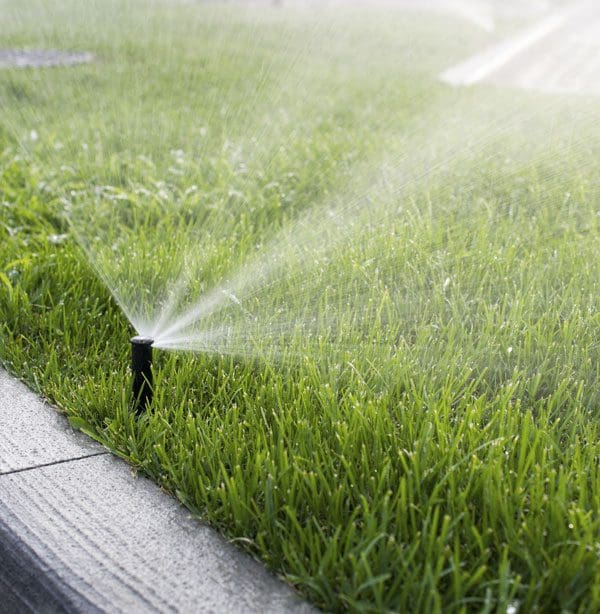
You may have runoff in sloped areas before the soil is adequately moist. To insure a good soak, when you see runoff, turn water off and wait about 30 minutes then restart watering the same area; repeat as needed.
Watering is most effective during morning hours when sunlight and heat cannot cause excessive evaporation.
New sod requires plenty of water to take root but giving too much water can be as bad as too little water. Grass roots don’t grow in waterlogged soil. They drown and rot and the grass blades wilt and die.
Symptoms of overwatering
Soggy soil, rotting grass roots and failure to take root are some of the symptoms of too much water. It takes 1 -3 weeks for the roots to take hold and during that time it needs water but too much water makes the soil muddy and the sod feel spongey.
Too much water interferes with healthy grass growth and makes the lawn susceptible to pests and diseases. Insect pests attack stressed or weakened lawns. In waterlogged lawns, heavy thatch provides a habitat for insect pests and protects them from insecticides.
Some weeds thrive in over-watered areas that are too wet for healthy grass growth.
When excess water moves nutrients out of the soil, the grass may turn yellow or light green.
You can check the roots by lifting a corner of the sod, if the roots are brown and soft, they may have drowned and are rotting.
Turf grass is resilient and may recover if overwatering stops at first signs.
